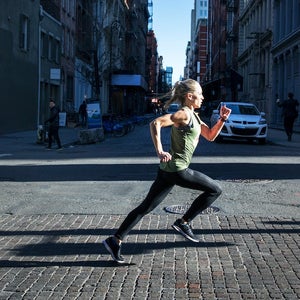

Greg McMillan
Find Me
Published
DonÔÇÖt be confused by the diversity of running workouts. Learn the training zones they fit into, what type of fitness each zone builds, and how each feels.
Three types of training that will improve your speed, stride, and stamina, but won't burn you out.
Become a fitter, faster and more confident runner by adding these speed workouts with this simple 8-week plan.
How to calculate the right half-marathon pace for your level of race fitness, plus workouts and strategies to ensure that youÔÇÖre ready to run it.
The Pulaski Bridge, at halfway in the New York City Marathon, is the signal to do a systems check and to start paying attention as you face the challenges of the second half.
Low-glycogen long runs produce greater fat burning, more muscle fiber recruitment, a boost to the aerobic system, and a lot of mental toughness.
Optimal training requires adapting to how well you've recovered, your life schedule, how you feel on the run, and your runner type.
Throw ÔÇťtaperingÔÇŁ out of your vocabulary and peak for your next marathon by carefully tweaking volume and intensity.
The science behind those screaming quads and pain brain. Becuase once you're in, the Boston Marathon doesn't make it easy to get that finisher's medal.
The easiest way to monitor your pace and effort has been around for decadesÔÇöand it doesn't require any gadgets.









